As Ted and I rode our tour bus to Pisa, we saw these mountains—the Apuan Alps. Our guide told us that the white areas are marble, not snow. This is where the famous Carrara marble comes from. Michelangelo used Carrara marble, and it’s used in construction around the world. Imagine mountains that are white rock when you dig instead of brown or gray.
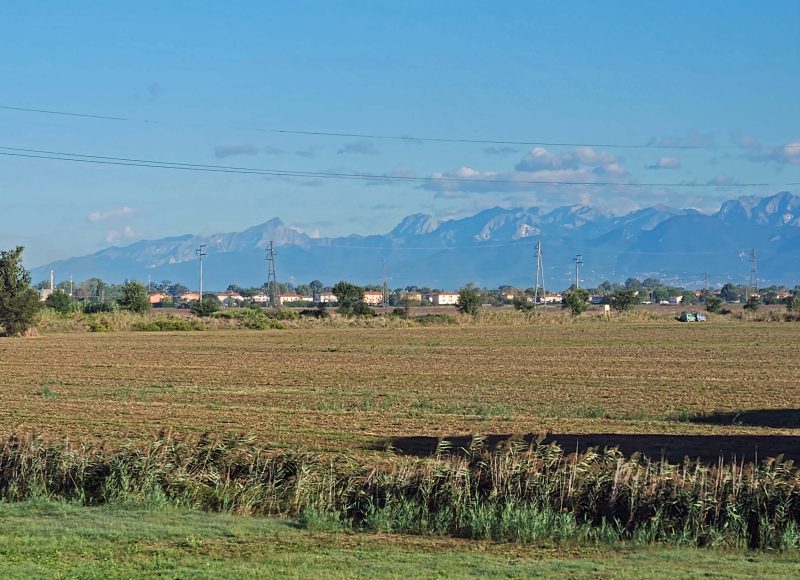
A little bit later, we crossed the Arno River where some kayakers looked like they were preparing for a race.
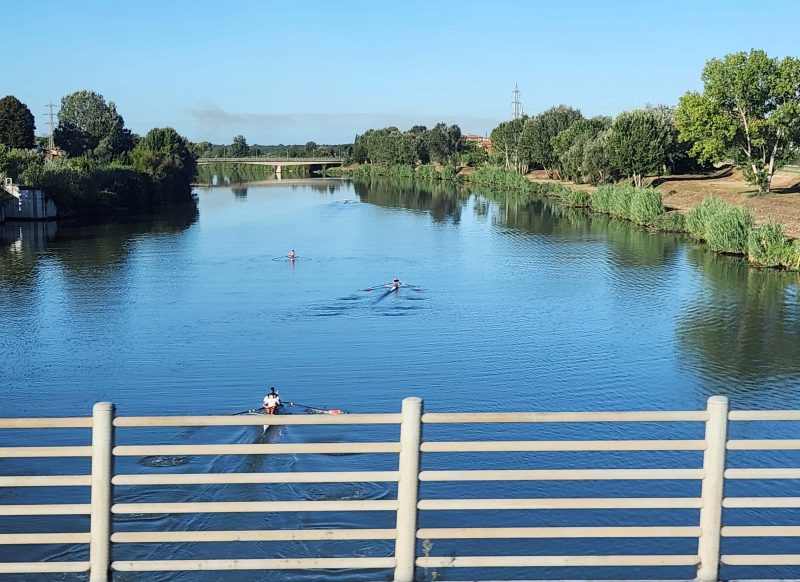
Until we signed up for this excursion, I always thought the Leaning Tower of Pisa was a solitary icon. In truth, I never gave it much thought unless I saw a picture of it. Now I know it’s a bell tower and is only one of four structures in Pisa’s Cathedral Square. The other three structures are the Baptistry, the Cathedral, and the Campo Santo (Holy Field, a cemetery). Three other buildings stood on this site before the current Cathedral was built in 1118, but they were torn down because they had been erected by previous conquerors. The entire complex is within the Old City walls. In the picture below, the Baptistry is in front, then the Cathedral, and then the Bell (Leaning) Tower in the background (center right). The Campo Santo is the low building on the left.
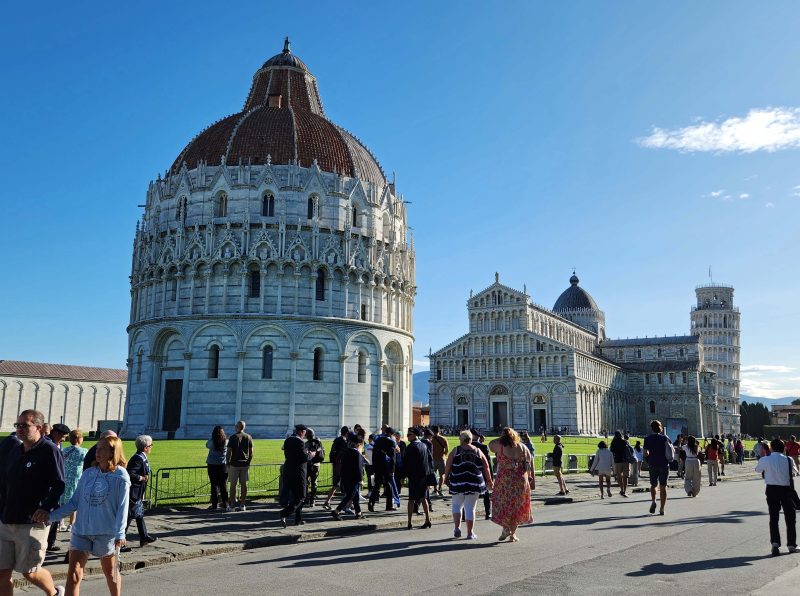
This is the Baptistry. Baptistries are always round or octagonal to symbolize “everlasting.” The octagonal shape also recalls the eighth day, when Christ rose and loosened the bondage of death for Christians. It is the building in which baptisms take place and in which catechumens are instructed. The entrance to the baptistry always faces the entrance to the church to symbolize that baptism is the means to enter the church.

We were visiting Pisa on a Sunday, and there was a baptism taking place. You can see the priest near the door, and the lady on the left is carrying the baby to be baptized. You can see part of the baby’s flowing white baptismal dress and its little bald head. 🙂
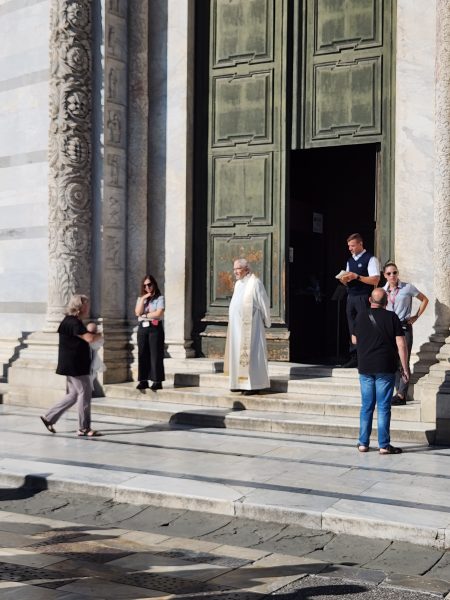
The Cathedral is very impressive. Sunday services were being held, so we were not able to go inside, but pictures I’ve seen online since then show a beautiful interior.
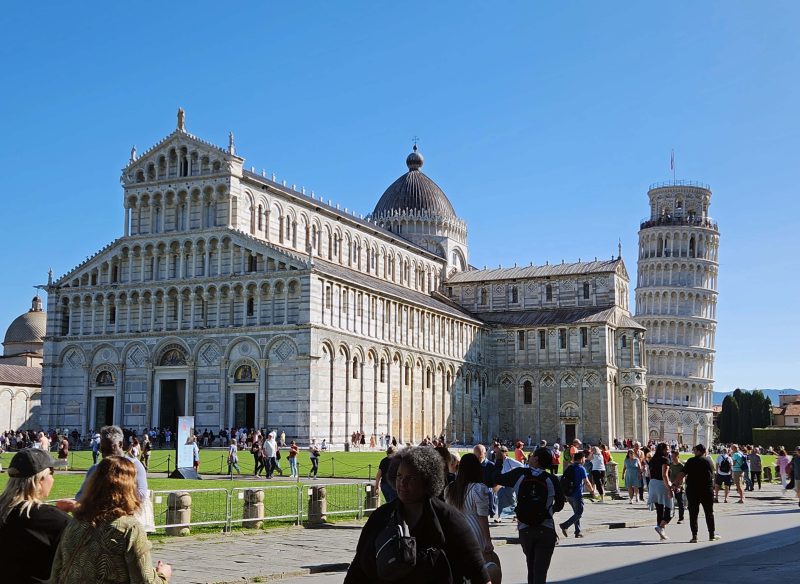
Someone in our group asked the purpose of the scaffolding covering one wing of the Cathedral. Our guide said that some part of the Cathedral is always being repaired or cleaned. This wing is currently being cleaned so the marble will be brightly white again.
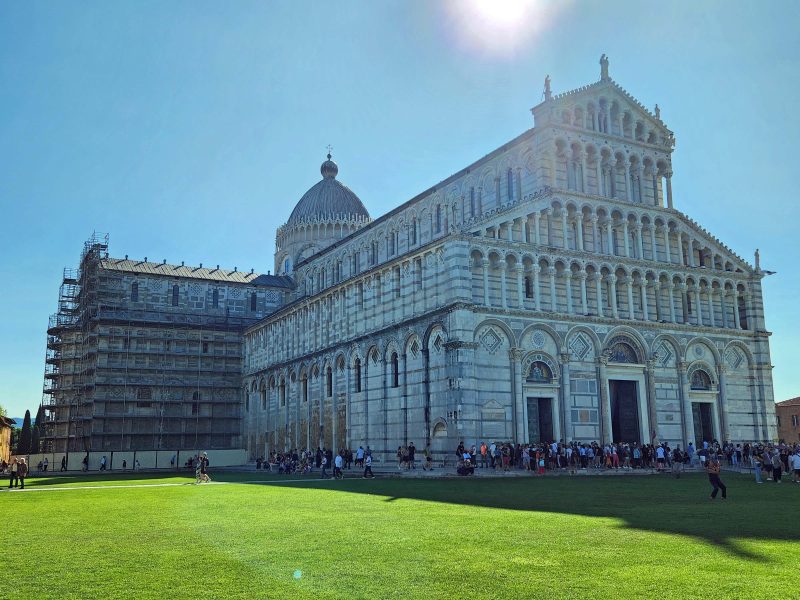
The Pisa Cathedral, like most other marble buildings at the time, was built with recycled marble from older Roman buildings. This was done partly because the people didn’t have any money to spare, but also partly to show that the polytheistic religion of the Romans was gone and powerless and that Christianity was stronger.
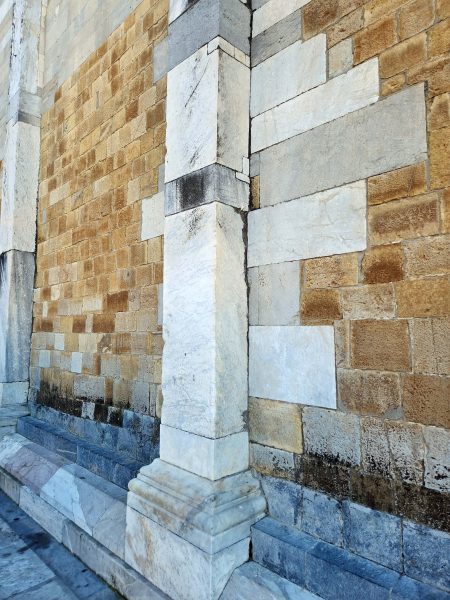
This piece of recycled marble was part of a sarcophagus.
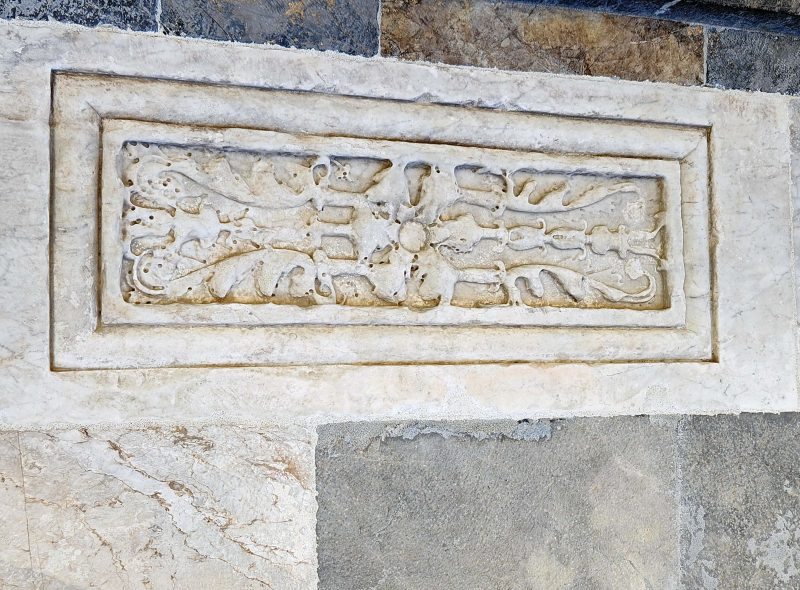
Another random piece had a decorative rose on it.
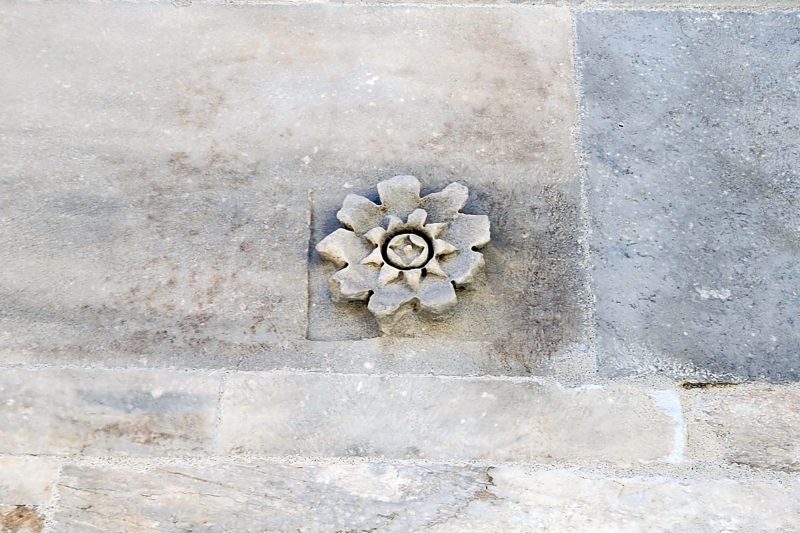
Because Caesar’s name was on this piece of recycled marble, it was placed upside-down to show that Caesar was no longer in power in Pisa.
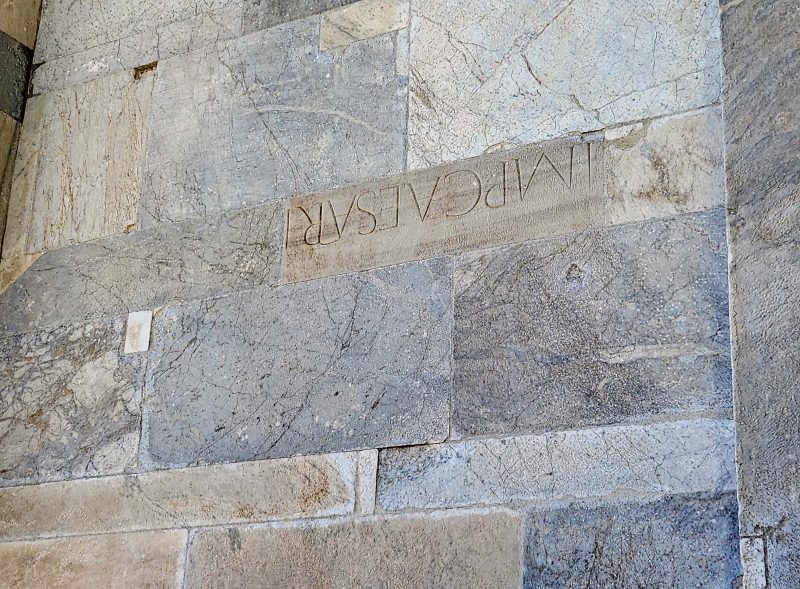
This sculpture on the ground near the Cathedral is called the Fallen Angel.
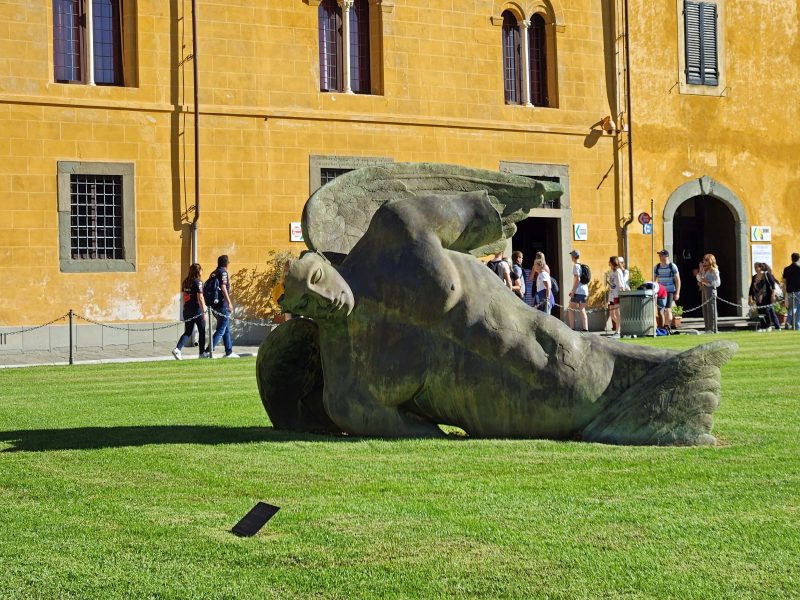
The most iconic building in Cathedral Square is, of course, the Leaning Tower of Pisa. It has seven floors in all, plus the bell chamber with its seven bells—one for each of the notes in the musical scale. The shoreline of the Tyrrhenian Sea (part of the Mediterranean) used to be here, but silt deposits have moved the shoreline 5 miles away from Pisa. Because of this sandy foundation, all the buildings in Cathedral Square lean. Yes, the Cathedral and the Baptistry too.
The Leaning Tower started sinking while the second floor was under construction. By 1990, the tower was leaning 5.5 degrees and the high side was 2.8 feet higher than the low side. After the abrupt collapse of another leaning tower (the Civic Tower of Pavia, 1989), work began to make Pisa’s tower safer. The high side was counterweighted with steel plates, and steel cables were used to harness the tower to prevent it from falling during the drilling.
Drilling was done to place tubes under the tower, and soil was carefully removed through the tubes, gradually creating a basin beneath the tower. The soil was removed at the rate of about a bag of sugar per day to avoid overstressing the tower. The tower gradually dropped into the basin as the digging progressed. Work continued until the tower was straightened about 20 inches to a 4-degree lean. It is expected to be safe for another 100-200 years. Or so the engineers hope.
The Leaning Tower has survived four major earthquakes since 1230, because it sits on such soggy, soft soil. Because the building is rigid and the soil is soft, the tower doesn’t resonate with earthquake ground movements. The anomaly of the situation is that the same soil causing the tower to sink is the soil that helps it survive.
Here’s proof that Ted and I visited Pisa.
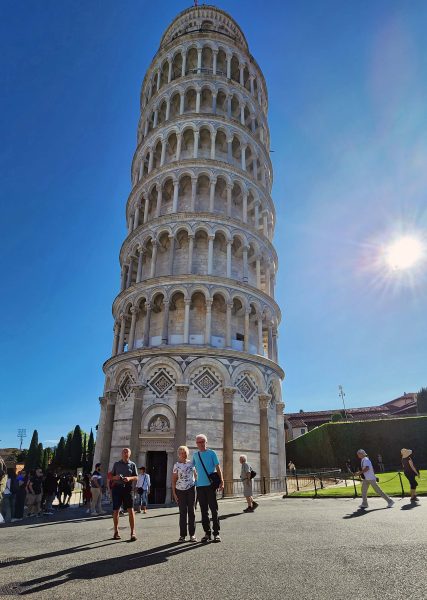
The Leaning Tower is ornately decorated, just like the Cathedral and the Baptistry. This is the entrance if you want to climb to the top. It costs €25 to do that. The Leaning Tower can be described as a column of columns. There is a second cylinder inside the structure. The 251 stairs to the top are very narrow and there are no landings at which to rest and no windows to look outside. Once you begin to climb, there is no room to turn around or to change your mind, and the people farther back continually urge those ahead of them to keep moving.
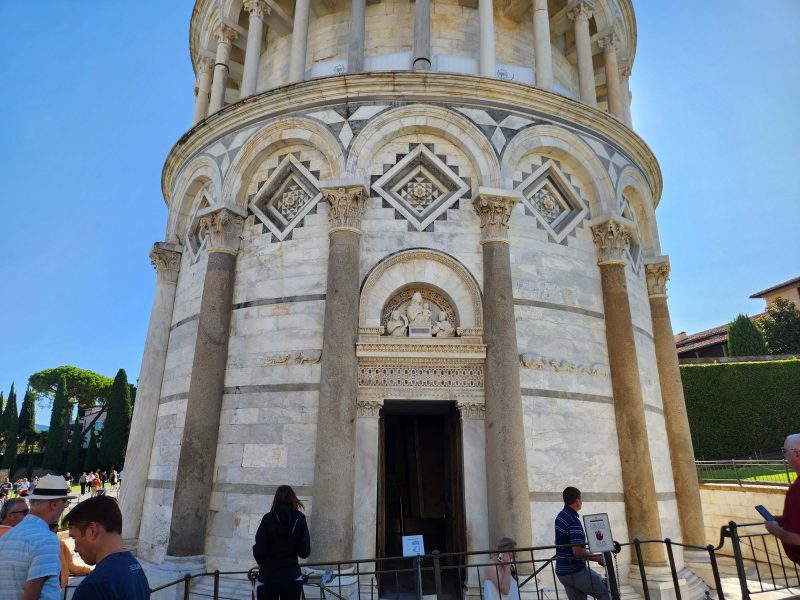
The line waiting to climb to the top of the Leaning Tower was already long at 10:15 a.m.. Forty people per hour are allowed to enter the tower to make the climb. Ted and I guesstimated about 200-250 people in line.
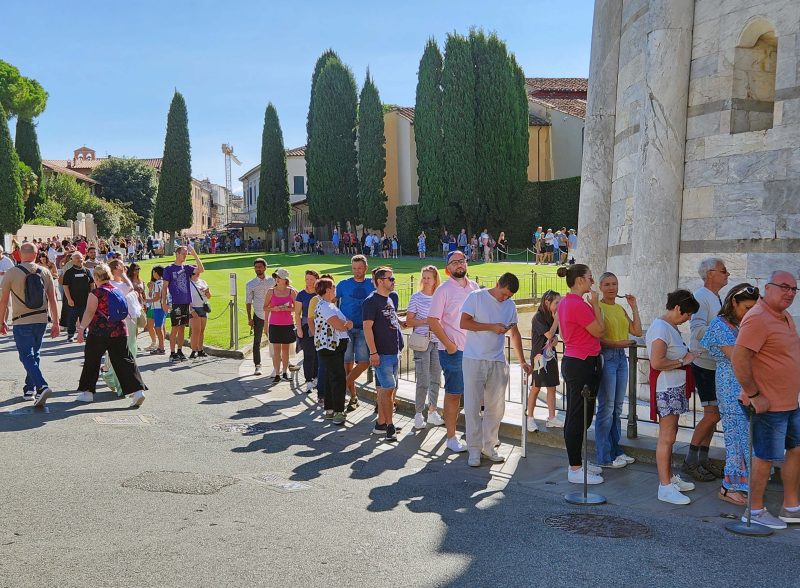
These people made it to the top. You don’t get to ring the bells when you arrive.
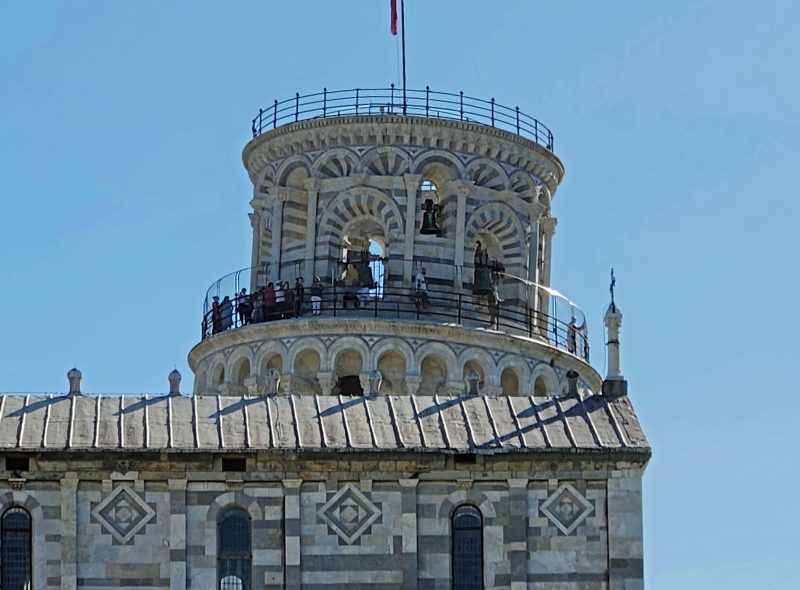
The fourth building in Cathedral Square is the Campo Santo, or the Holy Field. It is a rectangular building with a grassy quadrangle in its center. The Holy Field, a cemetery, includes a shipload of soil (about 600 cubic feet) from Golgotha, the site of Jesus’ crucifixion. Legend says that bodies buried in the Holy Field rot in 24 hours. This cemetery is still in use today, but only popes, bishops, cardinals, priests, and VIPs (i.e., nobles and rich people) may be buried here.
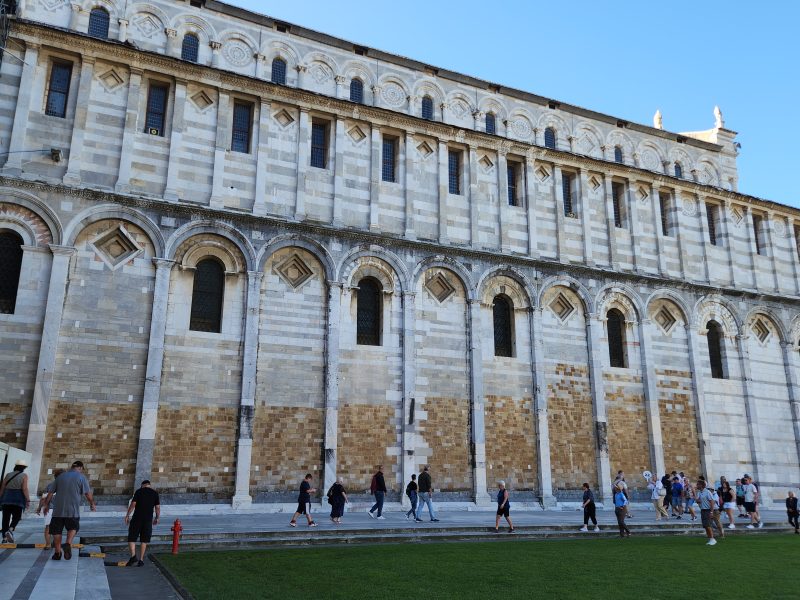
When we returned from Pisa, Ted and I had time to walk around Livorno (our port of call) for a little while. We saw the Old Fortress of Livorno in which (according to the sign) the ceremony proclaiming Livorno a city took place in 1606.
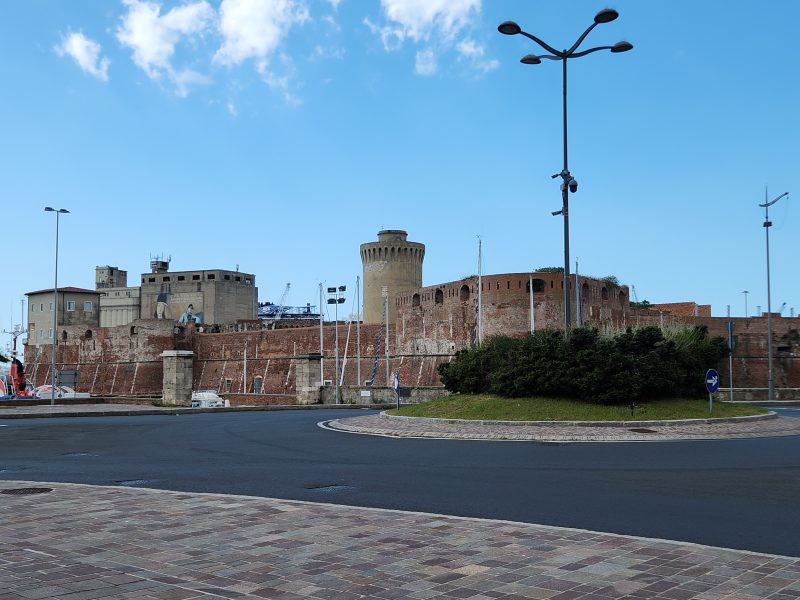
This sculpture is called the Quattro Mori (the Four Moors). The statue at the top of the pedestal is Ferdinando I de’Medici, the Grand Duke of Tuscany. Ferdinano I’s father created the Order of Knighthood of St. Stephen to protect the Tuscan seas. Ferdinando I strengthened the fleet and defeated the pirates, known as “mori.” This sculpture celebrates the victories of the Knights over the pirates on the Barbary Coast in 1607 and over the Turkish fleet in 1608.
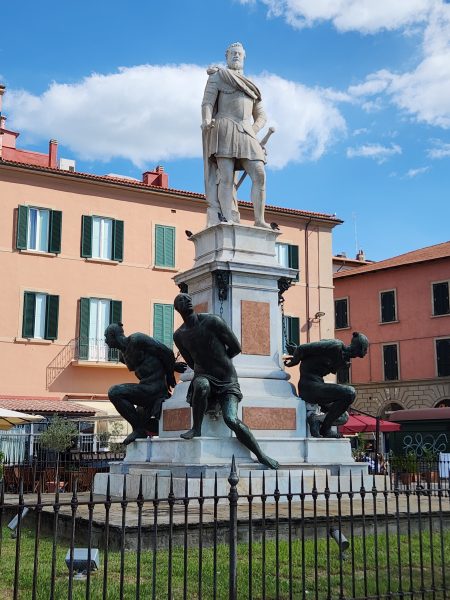
There is a plaque near this sculpture that says it is possible to see the noses of all four pirates if you stand at a certain place. The place was not identified, but I found it.
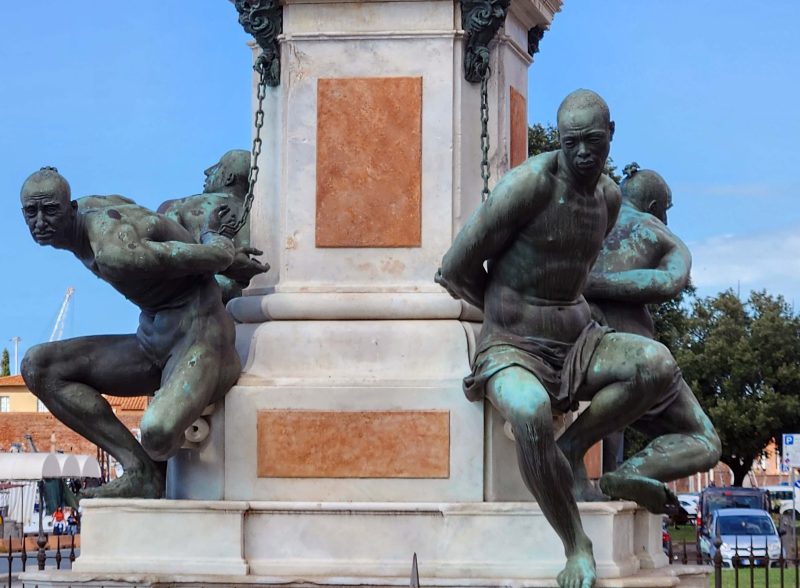
After our walk, Ted and I returned to our ship for dinner and departure to our next destination: Monte Carlo.